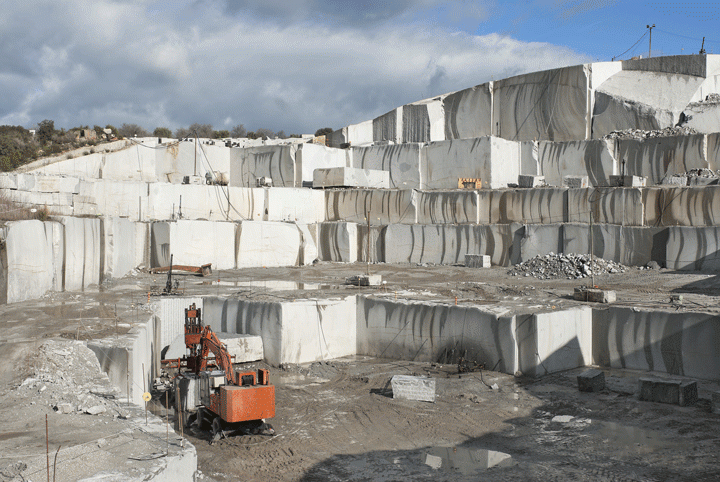The Concealed Treasures: Exploring Granite Quarries in South Africa
The Concealed Treasures: Exploring Granite Quarries in South Africa
Blog Article
Introducing the Mysteries of Granite Quarrying: Where Strength and Elegance Meet
The globe of granite quarrying is a world where the raw stamina of nature merges with human artistry to create frameworks that stand the examination of time with an air of style. From the depths of quarries to the meticulous sprucing up in workshops, the procedure of transforming granite into building wonders is a complex dancing of tradition and innovation. As we peer right into the midsts of this old craft, we start to discover the covert complexities that shape the really significance of our built environment.
The Origins of Granite Quarrying
In the annals of building background, the beginnings of granite quarrying are shrouded in a tapestry of old craftsmanship and geological wonders. Going back to old Egypt and Mesopotamia, the removal of granite from quarries marked the start of a trip that would eventually result in the production of several of the world's most famous frameworks.
Granite quarrying's roots can be traced to the competent artisans that acknowledged the stone's sturdiness and aesthetic appeal. With a combination of primitive devices and large determination, these early quarry employees unearthed granite blocks that would come to be the foundation of people.
As civilizations developed, so did the strategies of quarrying granite. The Romans, renowned for their engineering prowess, developed sophisticated methods for extracting granite to build monoliths, holy places, and roads that stood the test of time.
The legacy of these ancient quarrying techniques proceeds to form modern-day design, with granite staying a sign of stamina and beauty in building and construction projects around the globe. (granite quarries in south africa)
Devices of the Quarrying Trade
The advancement of granite quarrying methods from old human beings to contemporary times highlights the critical function played by the devices of the quarrying sell forming the sector's techniques. In ancient times, quarrying tools were primary, frequently being composed of knives, hammers, and wedges made from materials like bronze or iron. These tools required significant manpower and time to remove granite obstructs from quarries.

Furthermore, the introduction of pneumatically-driven devices and high-powered machinery has considerably decreased the physical labor required in quarrying procedures, improving worker security and productivity. As the quarrying industry remains to introduce, the tools of the trade find more information stay at the forefront of driving progress and shaping the future of granite extraction.
Drawing Out Blocks of Granite
Making use of precision equipment and advanced methods, the removal of granite obstructs from quarries has actually become an innovative process in the modern-day quarrying sector. The initial step involves identifying the location and dimension of the granite deposit to identify the most efficient removal approach. As soon as a suitable site is picked, the extraction procedure begins with the exploration of holes for the positioning of explosives. Controlled blasting methods are after that used to disintegrate the granite right into manageable sections.

Sprucing Up and Completing Methods
To attain a flawless surface on you could look here granite blocks, competent craftsmens use a series of precise sprucing up and completing strategies. After the initial extraction and forming processes, the granite blocks undertake an extensive sprucing up stage to enhance their all-natural beauty and resilience.
Along with polishing, ending up techniques are used to further fine-tune the granite's appearance. These techniques may include flaming, refining, or cleaning, each offering one-of-a-kind structures and finishes to fit different visual preferences. Flaming, as an example, involves subjecting the granite surface to heats to create a rough, textured finish, perfect for exterior applications where slip-resistance is necessary. Sharpening, on the other hand, supplies a matte surface that is smooth to the touch, perfect for indoor countertops and flooring. By thoroughly choosing and using these polishing and completing methods, craftsmens can transform raw granite obstructs right into exquisite items that showcase both toughness and style.

Ecological Impact and Sustainability
With the growing focus on ecological awareness in the market, granite quarrying practices are progressively looked at for their effect on natural deposits and long-term sustainability. Quarrying for granite can have substantial ecological effects. The extraction procedure usually entails the usage of hefty equipment, nitroglycerins, and huge quantities of water, leading to habitat devastation, dirt disintegration, and water air pollution. Furthermore, the transportation of granite from quarries to processing facilities creates carbon emissions, even more adding to ecological deterioration. about his granite quarries in south africa.
To alleviate these influences and make sure sustainability in granite quarrying, sector stakeholders are adopting different actions. Carrying out advanced innovations to decrease energy usage and water usage, redeeming quarried land for ecological repair, and advertising responsible sourcing practices are some methods being utilized. In addition, accreditations such as the Forest Stewardship Council (FSC) and the Management in Energy and Environmental Style (LEED) help consumers recognize eco-friendly granite items.
Verdict
To conclude, granite quarrying is a procedure that requires specialized tools and methods to extract blocks of granite and polish them to a high level of coating. While the ecological influence of quarrying can be considerable, initiatives are being made to enhance sustainability techniques in the industry. Generally, granite quarrying is a fragile equilibrium in between harnessing the toughness and elegance of this natural rock while decreasing its effect on the atmosphere.
Report this page